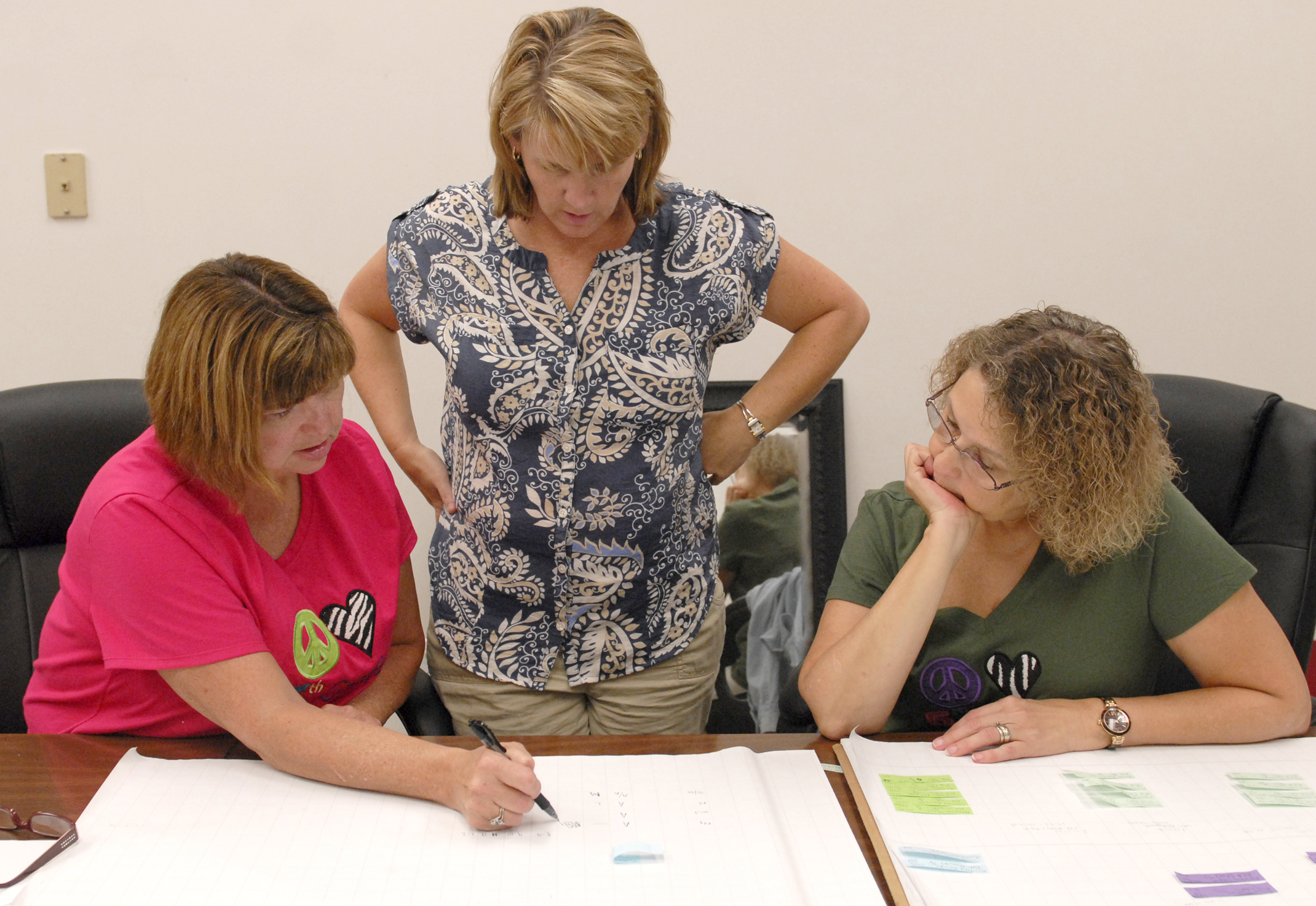FLINTSTONE, Ga. -- In a back office at Chattanooga Valley Elementary School, Sandra Jenkins, two other teachers and Assistant Principal Tracy Llewellyn peer over a giant calendar and brightly colored tabs while planning for today -- the first day of classes for some North Georgia schools.
The tabs represent each student at the Flintstone school with a disability, ranging from autism to hearing impairments, and how their needs will be met each day in the classroom. But the challenge this year is how to plan with half the number of special education teachers -- going from four full-time and two part-time teachers to three full-time teachers.
Walker County Schools cut 21 special education teachers across the district, and officials are scrambling to figure out how to serve nearly the same amount of students -- 1,250 districtwide -- with fewer teachers. The county now employs about 134 special education teachers.
"No matter how good you are, you can only be in one place," said Jenkins, who has worked at Chattanooga Valley for 32 years.
As students in Walker and Catoosa counties head back to classes today, another challenge the systems may face is larger class sizes.
Walker County also cut 27 classroom teachers at the end of the last school year, which could increase class sizes by two to three students, said Heather Holloway, the district's personnel director.
In Catoosa County, classes are expected to have 22 students each in K-5 grades and about 29 students in sixth through 12th grades, Superintendent Denia Reese said.
"Each year we have made difficult decisions to balance the budget," Reese said.
Across the state, school districts are having to pay an additional $150 in insurance each month for insured classified employees, which adds up to $1,800 per employee annually.
Officials said special education was one of the areas cut in Walker County because they saw that as an area where teachers could tighten their scheduling to fit in more time to see students.
"There's only so many places you can cut. Once you get to a certain part, you have to move to personnel," Holloway said.
One of the services schools provide for special education is carried out through inclusion -- in which students with disabilities are taught in regular classrooms and their special ed teachers visit the classrooms to work with them more closely.
At Chattanooga Valley, administrators try to assign all the special education children to one class at each grade level to make it easier for the teachers to give everyone the attention they need, officials said.
Last school year, Jackie Cunningham, a Chattanooga Valley special education teacher, was able to work mainly with third-graders. But this year she will have to go back and forth between grades, she said.
Angie Ingram, special education coordinator for Walker County, admits this year will be a challenge but said teachers are up to the task. "I feel very comfortable. They are very attentive to the kids," she said. "They're going to make sure those services are provided."
And with larger class sizes in general, teachers say they will have to be more intent while watching for students who are having a more difficult time keeping up with the lessons.
Sandy Melton, a first-grade teacher at Chattanooga Valley, said one of the keys to organizing a larger classroom is getting the students to work together in groups and pulling the struggling students aside in threes or fours.
"They can do a lot of teamwork to solve problems on their own," she said. "That gives you a chance to pull a few kids back and work with them."
Contact staff writer Joy Lukachick at jlukachick@timesfreepress.com or 423-757-6659.
